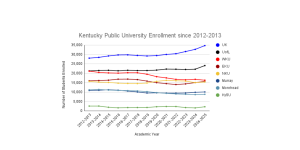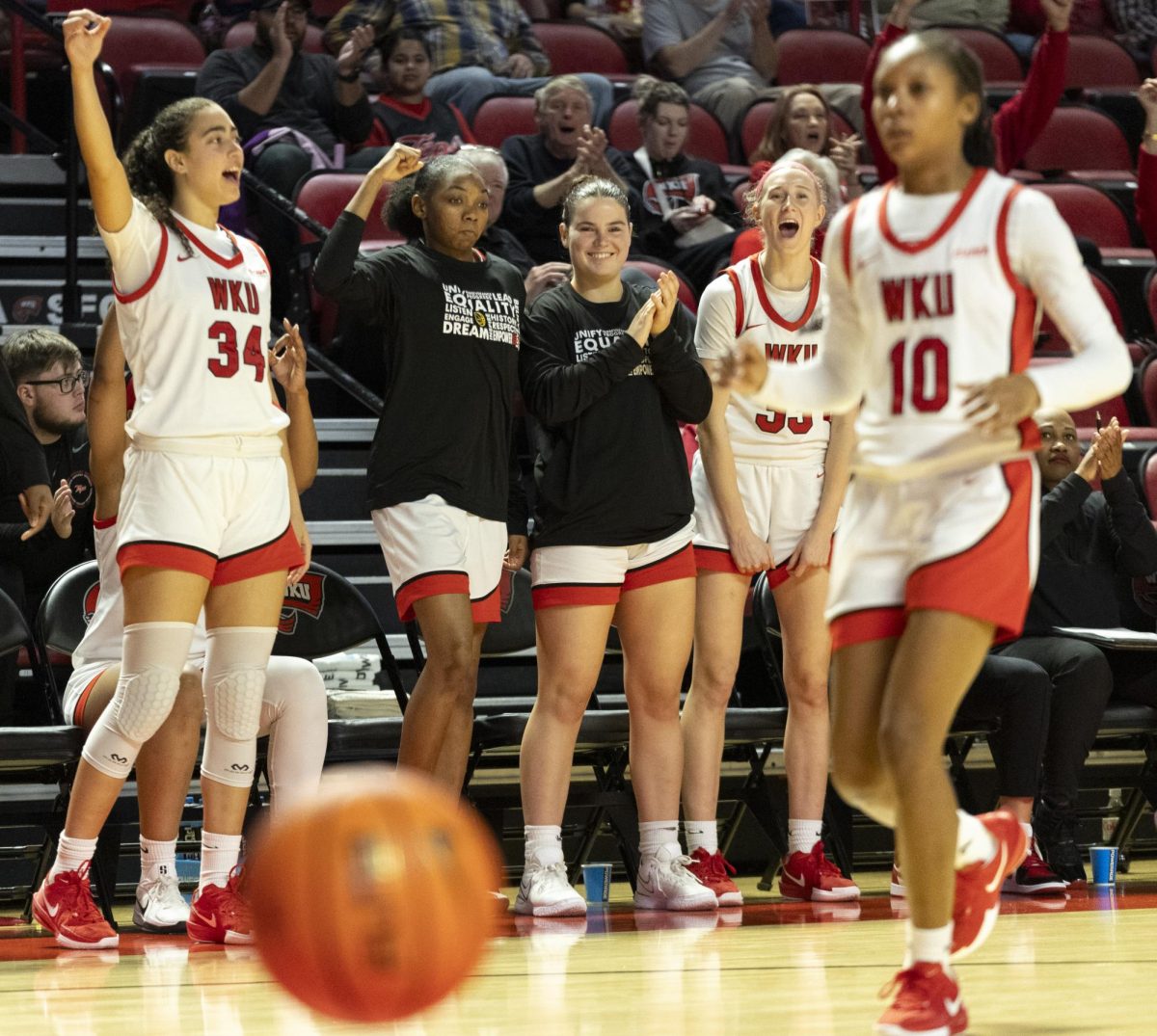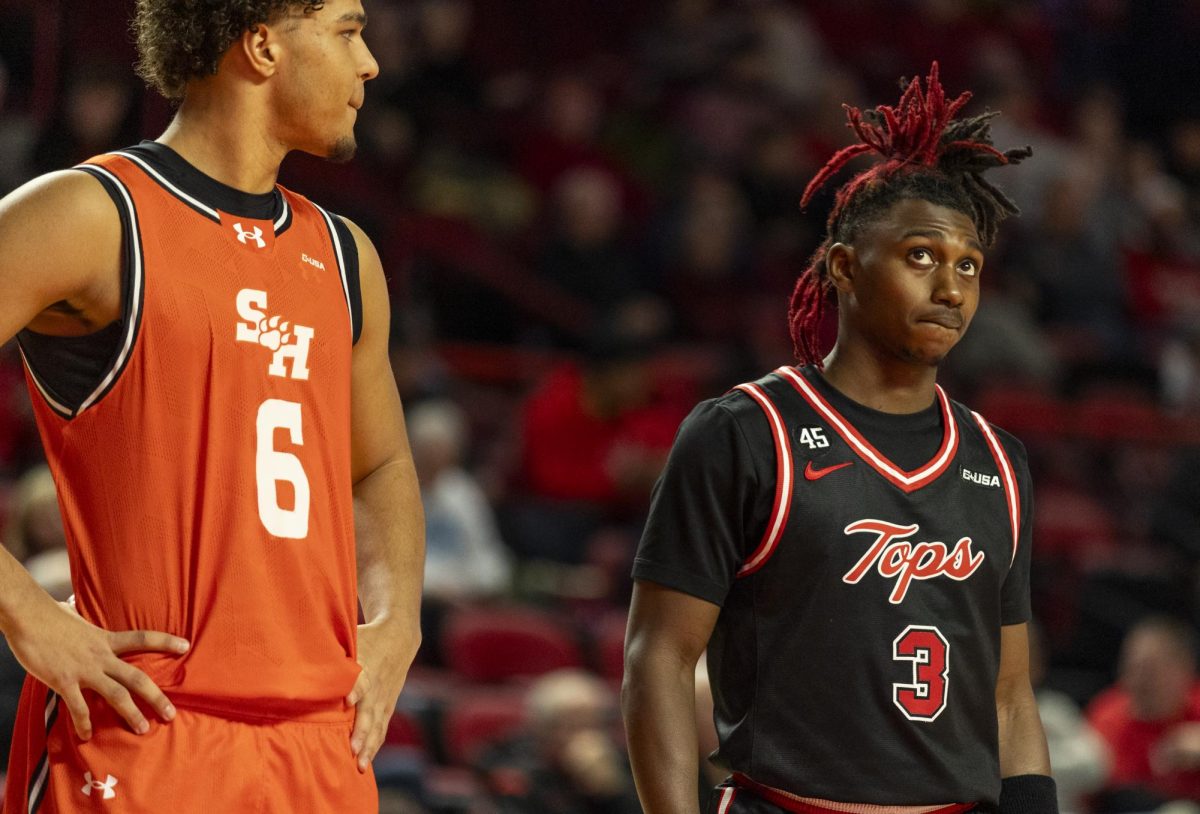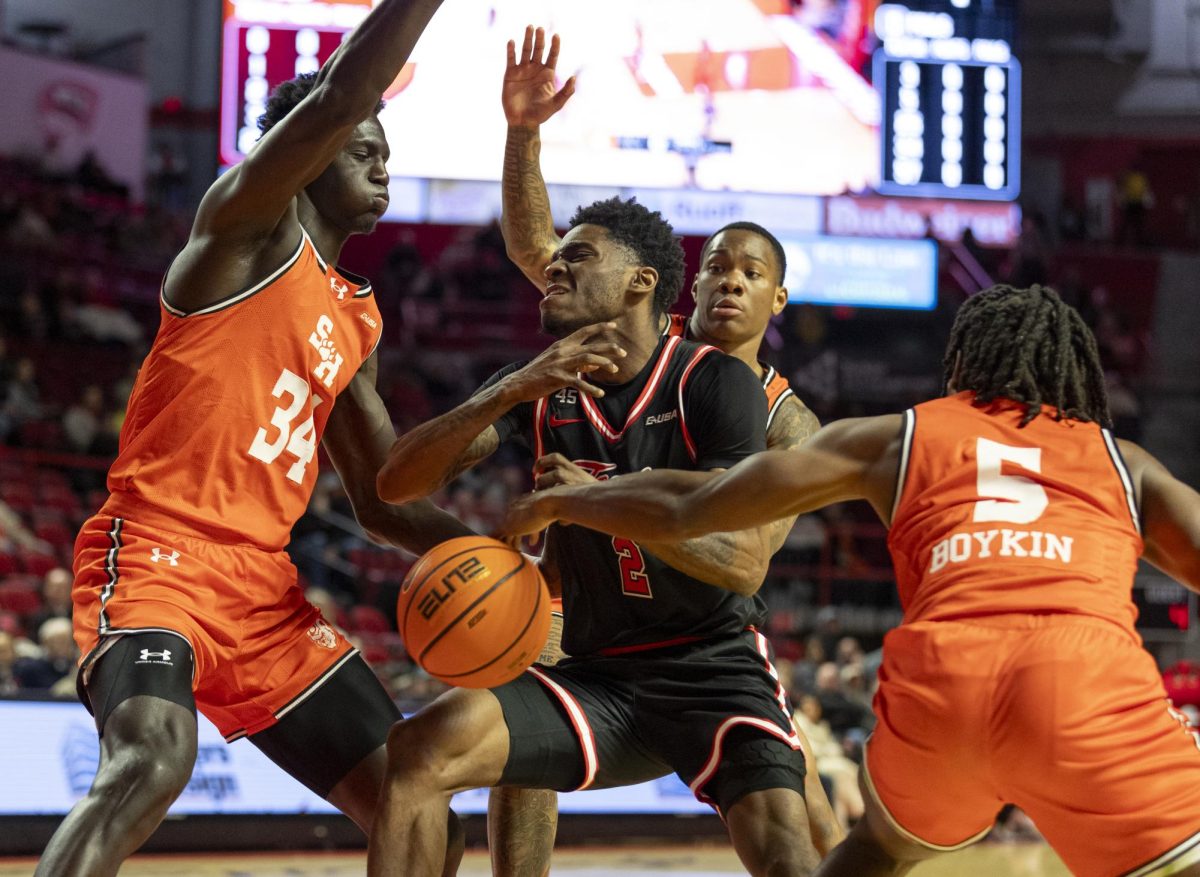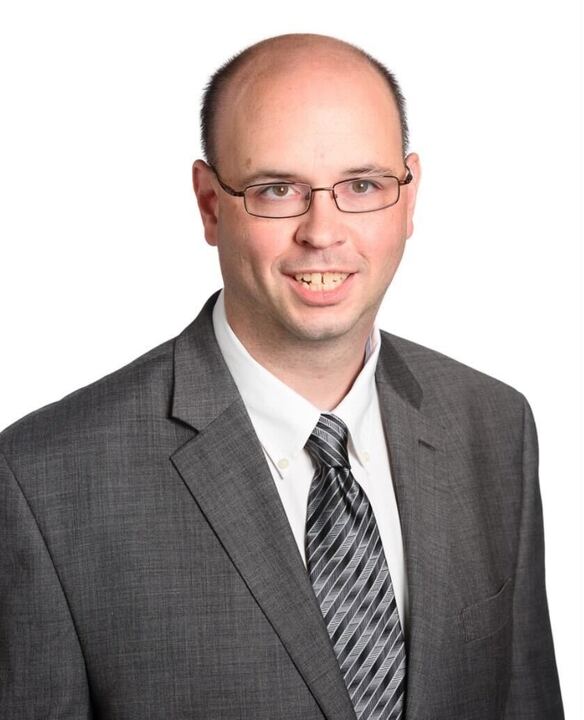Former president spent nearly $800 million on construction
November 28, 2017
Augenstein Alumni Center. The Honors College and International Center. And a hall named after the man who helped build them all, Gary A. Ransdell Hall.
These three buildings are among approximately 16 that were built on WKU’s main campus in the last decade. They serve as important places at the university, providing homes for the alumni association, international and honors students and the College of Education and Behavioral Sciences.
They are part of the legacy former president Gary Ransdell left behind when he retired on June 30, 2017, after 20 years as the university’s ninth president.
“For the most part, the beauty of this campus far exceeds that at most campuses, and I have to give Dr. Ransdell credit for that,” Sam Evans, dean of the College of Education and Behavioral Sciences, said.
However, as the construction sped ahead on campus, faculty salaries began to lag and student costs, including tuition and fees, continued to increase.
“I think that an unfortunate part of President Ransdell’s legacy is that we’re not on a very stable ground,” Patti Minter, former faculty regent and a professor in the department of history, said.
From the time Ransdell stepped into office to the time he stepped down, he oversaw the beginning and completion of approximately 263 renovation or construction projects, with several projects started but not yet completed during his time in office, according to records from WKU.
The result was an increasingly larger campus and, perhaps, a more beautiful one. But, over time, the changes came with a price tag of $796.4 million.
Comparing WKU’s spending with state universities
When compared to other state universities in Kentucky, WKU ranks second in total spending during the past 20 years out of the five universities that responded to an open records request, falling behind the University of Kentucky. WKU outspent Eastern Kentucky University, Northern Kentucky University and Murray State University, which have annual budgets comparable to WKU’s budget. UK, however, has an annual budget that is over eight times the amount of annual budgets of other universities in the state.
On a per-student basis, WKU again ranks second in the highest spending out of those five universities that responded to open records requests.
Morehead State University, Kentucky State University and the University of Louisville did not respond in time for publication.
Over that 20-year period, WKU spent $796.4 million on construction projects. To compare that to state universities of various sizes, the College Heights Herald determined the average student enrollment over that time period, in order to arrive at a per-student amount of spending. Over that time period, WKU had an average annual enrollment of 18,623 students, which amounts to $42,766 spent per student.
WKU’s spending per average student enrollment was almost twice that of EKU, at $21,284 spent per student, and Murray, at $23,608 spent per student.
EKU, with the closest average enrollment to WKU, spent $338.2 million on construction projects during the same time period, less than half of what WKU spent.
NKU spent $28,690 per student, more than EKU and Murray, but still about $14,000 less than WKU.
Only UK spent more than WKU during that time period. UK, with an average student enrollment of about 8,000 more students than WKU, spent $97,923 per student, over twice the amount WKU spent.
Paying for projects
Since Ransdell was president, there have been about 279 construction projects on WKU’s campus, with several projects still undergoing construction, according to the open records request. Funding for most of the projects came from four places: state funds, university funds, auxiliary funds and private donations.
State funds come from money allocated from the Kentucky General Assembly to universities. Auxiliary funds come from money made through WKU’s self-supporting activities, such as food services and the WKU Store, according to a financial audit. Private donations come from donors, and university funds come from money WKU makes while operating as a university.
To cover the cost of a construction project through university funding, WKU can choose to purchase bonds and then sell them with the promise to repay those who buy the bonds.
Agency-bond sales paid for Parking Structure 2, which cost over $10 million, according to the 2003-2004 capital budget. To repay the bonds, WKU added a $36 semester fee for students.
Students also paid for the construction of Parking Structure 3, a $10 million project completed this month, with a $30 semester fee.
Student fees also helped pay for the renovation of Downing Student Union, the single most expensive project during those 20 years. The $54 million transformation from Downing University Center to DSU took place from spring 2011 to fall 2014 and was partially paid for with a student semester fee of $70, according to a list of fees on WKU’s website.
University funds covered about two-thirds of the 279 projects started during Ransdell’s tenure, according to a list of construction projects. Some of those projects include:
- the renovation of E.A. Diddle Arena and work on surrounding parking areas,
- the construction of a practice football field and several other modifications relating to the project starting in 2002 for $32 million,
- multiple campus wide classroom improvements in 2001, 2003, 2005, 2006, 2007 and 2008 for a total of almost $5 million,
- the construction of Centennial Mall in 2006 for $2 million and
- renovations on Van Meter Hall beginning in 2008 for about $21.8 million.
No longer a “tired campus”
Evans said when he started at WKU in 1990, he found a “very tired campus” in need of updates. He said the campus he started at looked much different than it does today.
“There’s absolutely no building that looks old and tired, even the older buildings, Tate Page Hall being included,” Evans said. “They’ve done a phenomenal job of making it look nice.”
As dean of the College of Education and Behavioral Sciences, Evans oversaw the college’s move from Tate Page Hall to Ransdell Hall in 2011. Evans said the new building needed to replace Tate Page Hall, which had problems with mold and the HVAC system. WKU worked to fix the problems in Tate Page Hall as they arose, but had to continue spending money to make more and more repairs, Evans said.
“They knew there was an issue, and we needed to do something and so consequently, we got bumped up to the top of the list,” Evans said.
Work on the $32.7 million Ransdell Hall began in 2006 with funding from the state. Evans said the building itself cost a little over $20 million but the land the building sits on had to be purchased and the houses on the land had to be demolished.
Evans said Ransdell approved the exterior design of the buildings, but he didn’t involve himself after the exterior had been designed.
“I know the architects met with him at varying points, but to my knowledge, he was not involved in any decision related to the utilization, how the building would be laid out,” Evans said.
Evans said he worked closely with those involved in the work on Ransdell Hall, meeting with the architects to design the building specifically to serve the needs of the College of Education and Behavioral Sciences.
“Every classroom, every room in this building, when we met with the architects, the utilization of that space was discussed,” Evans said. “Who would be using it? What was it going to be used for?”
Evans said the construction Ransdell oversaw has given WKU a brand and a vision that helps it compete with other universities.
“You only get one first impression as a university, so you want to make sure that you do everything you can that leaves a positive impression with the students and their families when they arrive on campus,” Evans said.
The original design included a larger building, but the size decreased because the design went over budget, Evans said.
Chief Facilities Officer Bryan Russell said the budget must always be considered when working on a new construction project. During every stage of the process, a budget is provided. He said if a project goes over budget, changes are considered to reduce the cost.
“The process is proven and works very well here at WKU,” Russell said in an email.
Evans said he thought the building was named after Ransdell because of Ransdell’s involvement with the College of Education and Behavioral Sciences. Ransdell held rank and tenure in the college in educational administration, leadership and research, according to Evans. Ransdell’s wife, Julie, was also a graduate of the college.
“He had done a lot for the university in terms of facilities, in not only updating the facilities that existed but in also being, in my books, the driver behind a lot of the new buildings,” Evans said.
Craig Cobane, executive director of the Mahurin Honors College, said the $22 million Honors College and International Center, or HCIC, has created a home for honors and international students and leaves a better impression than the Honors College’s former home, which was located in a trailer at the top of campus.
Cobane said the new buildings on campus help improve “curb appeal.” Cobane said when people used to drive past where HCIC now sits, they would see a row of fraternity and sorority houses.
He said people who visit WKU now see a beautiful campus that may make them want to attend WKU.
“No one ever says, ‘I can’t go there because it’s too beautiful,’” Cobane said.
Cost of expansion
From a monetary standpoint, WKU’s cost of expansion during Ransdell’s tenure nears $800 million. During that same time, WKU’s enrollment increased 39 percent, exceeding 21,000 for the first time in 2011. The campus has at least 10 new buildings, and a new residence hall, Hilltopper Hall, is scheduled to be completed for fall 2018. The residence halls have been renovated and parking has continued to expand with the addition of two parking structures.
At the same time, between 2009 and 2015, the average salary of a full-time faculty member at WKU increased approximately 2.7 percent, while the average salary of a faculty member in the same position at universities similar to WKU increased approximately 4.1 percent, according to the Chronicle of Higher Education database.
Faculty received a 3 percent pay raise during Ransdell’s last year as president, when WKU announced a budget reduction plan in the spring of 2016. The raise was given in stages, the first on July 1, 2016. The following two raises began on Jan. 1, 2017, and July 1, 2017. The raise was given at the same time WKU increased tuition by 4.5 percent.
The Faculty Work Life survey results show faculty members have become increasingly dissatisfied with their salaries. In the 2009 welfare survey, the first set of results available online, 67 percent of respondents said they were unsatisfied with their salaries. In the 2016-2017 survey, nearly 78 percent of respondents said they were unsatisfied with their salaries.
Although no direct evidence linking the cost of construction and the Faculty Work Life survey results exists, Minter said she thinks the past administration’s focus on construction has affected the salaries. She said WKU employees haven’t received a significant pay raise in approximately 10 years, which was around when merit raises were ended.
She said salaries have remained mostly the same while insurance premiums have increased, so many faculty members have lost money.
“Our compensation has not kept up either with cost of living or at other benchmark institutions,” Minter said.
Full-time professors at WKU received the fourth-highest salaries compared to the seven other state universities during the 2015-2016 academic year, behind UofL, UK and NKU, according to the Chronicle of Higher Education database. Data from the 2015-2016 academic year is the most recent available.
Minter started at WKU in 1993 and worked at the university for the entire duration of Ransdell’s presidency. She said when she started at WKU, the campus “needed some rejuvenation,” which Ransdell started. Many of the construction projects, like the renovation of Van Meter Hall or the construction of Gary Ransdell Hall, were necessary to improve the campus, Minter said.
She said other projects, such as HCIC and the Confucius Institute Building, were buildings Ransdell wanted, not buildings the university needed.
Minter served on the Board of Regents when the board voted to approve the construction of HCIC. She said she voted “no” because she viewed the building as a want, not a need. The staff regent at the time and the student regent, a student in the Honors College, voted against the building as well, Minter said.
University funds paid for the building. A portion of tuition revenue from international students covers the cost of the bonds used to pay for the construction, Minter said. She said relying on international enrollment to fund the building concerned her because international enrollment can change. Minter said she asked Ransdell what would happen if international student enrollment decreased.
“And he said, ‘Well nothing’s going to happen because international student tuition is growing,’” she said. “I said, ‘Well what if it stops growing? What if something happens internationally?’”
In the past year, international enrollment dropped almost 29 percent, according to the 2017 enrollment report.
Minter said other construction decisions were dependent on the state’s well-being. The state budget fell apart in December 2007, and Kentucky still hasn’t recovered, Minter said.
“President Ransdell had committed the university to a lot of building projects based on the idea that growth and prosperity would continue on campus and in the Commonwealth, so again, there was a lot of decision making based on rosy prospects that have not come true,” Minter said.
Evans said the campus needed construction because a university’s facilities need to be attractive to attract students. He said because the facilities have now improved, the university should move its focus elsewhere.
“If you get the facilities to a level that the facilities can serve the need…then you take quality programs, and you focus on improving those programs, and you focus on personnel related to the programs,” Evans said. “When it’s all said and done, hopefully you have a campus where all aspects are very integrated in terms of what we do, who we are, and those types of things.”
Looking Ahead
Despite the nearly $800 million WKU has already spent on construction, about $338.7 million worth of projects have been scheduled for the future, according to the 1997-2017 project list.
Of the 11 future projects listed, only two require university funds: phase III of the rehabilitation work on Raymond Cravens Library, at an estimated $600,000, and the capital renewal pool, at an estimated $10 million. Projects with the capital renewal pool have included HVAC upgrades and water line upgrades, according to WKU’s 2011-2012 Capital Budget.
State-funded projects include replacing both the Gordon Ford College of Business for $120.1 million and the underground infrastructure for $55 million.
The other seven projects include residence hall and athletics renovations and the addition of an indoor sports complex, all paid for with private funds.
Current President Timothy Caboni has said he intends to slow down the pace of construction and focus on other aspects of the university. During his convocation speech on Aug. 18, 2017, Caboni said the university will now focus on “investment in people and in programs.”
Caboni also said the university’s budget will be reevaluated. WKU currently faces a budget deficit of over $10 million.
Minter said she supports changing the university’s priorities and starting to focus on employees, students and programs. She said she thinks WKU needs to transition away from construction and back toward the academic mission.
“I think one of the biggest challenges President Caboni has inherited from President Ransdell was President Ransdell’s privileging overtime of his wants over needs and privileging projects that did not support the academic mission or were not necessary for the academic mission over some things that absolutely were,” Minter said.
Reporter Emma Collins can be reached at 270-745-6011 or emma.collins399@topper.wku.edu.










